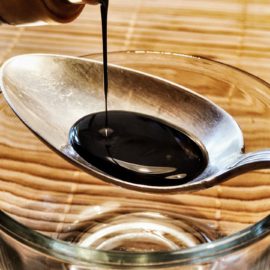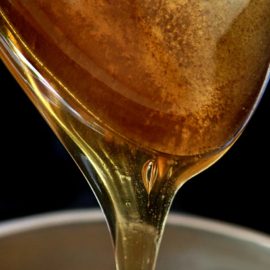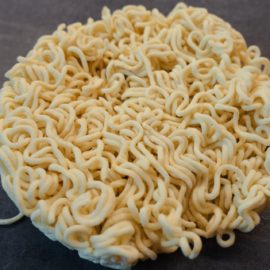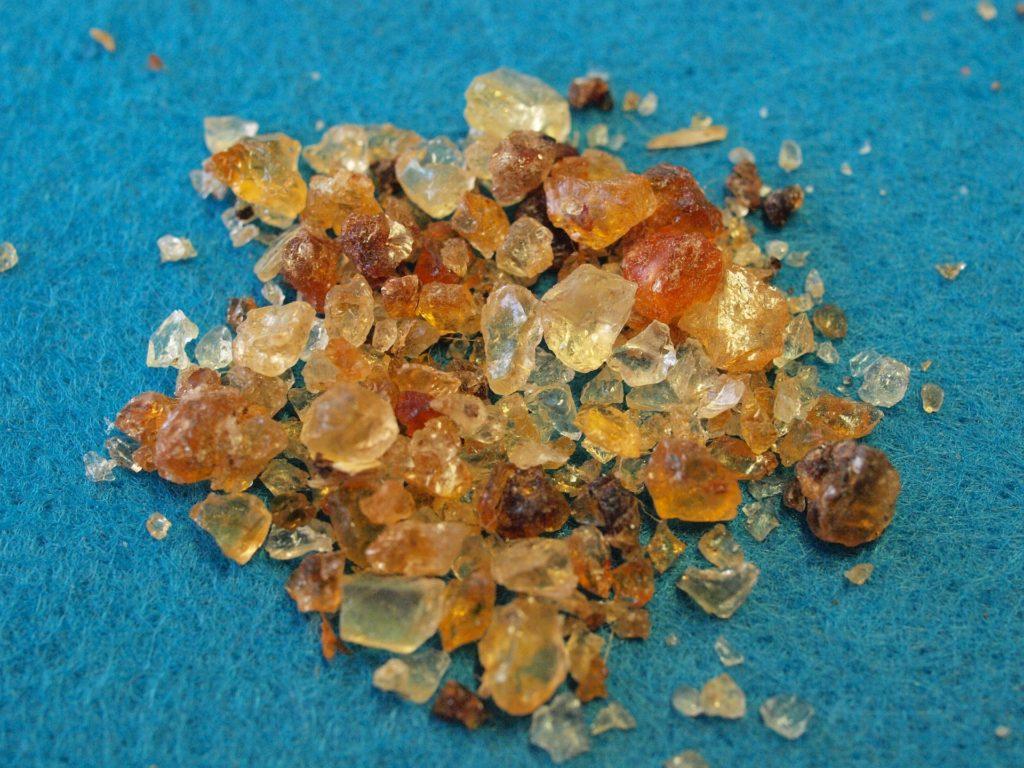
Certain gum products are exudates produced in response to injury by plants primarily found in Africa and Asia. “Exudates” refer to gums that are released or exuded in reaction to damage to plant tissue. They produce highly tough, shiny nodules or flakes that can be harvested when exposed to the atmosphere. Gums are complex heteropolysaccharides, and gum Arabic (also called gum acacia) is an example.
Gum Arabic is the dried exudate of the acacia tree. It is a polysaccharide salt that contains ions of calcium, magnesium, and potassium. It is neutral or slightly acidic. Gum Arabic is employed in a wide range of industries. It is mostly utilized in the production of food, where it serves as a functional ingredient. It is one of the few gums that, in order to increase viscosity and serve as an emulsifier and crystallization inhibitor, requires a high concentration. Gelatin and numerous other proteins combine to generate coacervates with gum Arabic.
As a food additive, it is denoted by the E number E414. It is also used in manufacturing of hairsprays, face masks, and setting lotions, among others.
Since it can form a gel, it helps emulsify liquids, improve mouthfeel, or encapsulate flavor molecules. This is why softdrinks contain gum Arabic—it binds the sugar so it is uniformly distributed, and not precipitate to the bottom of the can.
Let’s further discuss.
HOW IT IS MADE
Sudan, Chad, and Nigeria are the two most significant growing regions for species that provide the best gum. In fact, according to the Food and Agriculture Organization of the United Nations, the three African nations control 95% of the world’s production of gum Arabic. Gum Arabic is frequently made in the form of a purified, spray-dried product.
Gum Arabic is the resin that seeps from tree stems and branches of acacia tree. The gooey, sticky material dries on the branches to form hard nodules. Production of the gum starts by carefully removing portions of the bark without harming the tree. The hardened saps are then harvested by hand and sorted according to size and color. This is the traditional way of harvesting produces the best gum.
Since the gum is made by extracting the tears from the gum tree, some gum has particles of bark in it. Because of this, the gum can absorb the bark’s color and astringent flavors. Furthermore, sand from the desert frequently contaminates raw gum. There is a need to purify the gum to remove bark and sand, especially if it is to be used as an ingredient in food. Filtering and centrifuging help removes insoluble materials. Filtration and centrifugation are effective separation techniques in the manufacturing industry.
After eliminating the contaminants, the gum is gently heated and dissolved in water to get a solution that contains between 30% and 50% gum. Acacia gum is far more soluble than other gums. If necessary, a 50% solution in cold water can be made. The viscosity of the solution decreases as the temperature rises, and is pH-dependent. Viscosity is at its highest at pH 6, although it decreases between pH 9 and below pH 4.
Forms of gum Arabic
Gum Arabic comes in several forms: raw, powder, kibbled, and spray-dried.
The raw form of gum Arabic is used in the manufacture of wine and confectionery. It is the form that has gone through simplest form of preparation—sorting and visual inspection only.
kibbled gum Arabic is gum in granular form. This is also used in wine and confectionery. Gum Arabic in powder form is also used confectionery by dusting the manufacturing surface.
You might also like: How To Soften Hard Brown Sugar?
Spray-dried gum, which is commonly used nowadays, also provides pharmaceutical manufacturers with a clean, ready-to-use product. However, the price of instant gum is higher. If a confectionery company employs gum as a minor ingredient, the capital and labor costs of purifying the raw material may be extremely expensive. A company that uses gum Arabic as a major component, on the other hand, may reach a different result.
GUM ARABIC CHEMISTRY AND FOOD
Gum Arabic is a heterogeneous substance that is made up of two major components. One is formed of polysaccharide chains with little or no protein, and accounts for around 70% of the gum. The other portion has greater molecular weight compounds with protein as an intrinsic part of their structure.
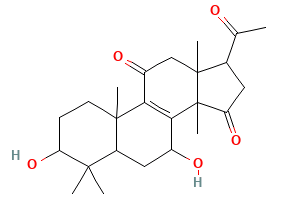
In terms of protein composition, the protein-polysaccharide fraction is diverse. The polysaccharide structures are covalently connected to the protein component by coupling to hydroxyproline and, possibly, serine units. These are the two major amino acids of the polypeptide. Other amino acids includes proline, aspartame, and threonine. The overall protein content is roughly 2% by weight, but can have up to 25%. Polysaccharide structures, whether coupled to protein or not, are highly branched acidic arabinogalactans with the approximate composition:
- 44% d-galactose
- 24% l-arabinose
- 14.5% d-glucuronic acid
- 13% l-rhamnose
- 1.5% 4-O-methyl-d-glucuronic acid
Gum Arabic dissolves readily when stirred in both hot and cold water. Except for gums that have been purposefully depolymerized to produce low-viscosity kinds, it is unusual among food gums due to its great solubility and low solution viscosity. Due to their high viscosity, most gums cannot dissolve in water at concentrations greater than 5%, but Gum Arabic can produce solutions that are up to 50% concentrated. Concentration above this, dispersions are gel-like. Gum Arabic is soluble in aqueous ethanol up to a limit of around 60% ethanol, but is insoluble in oils and the majority of organic solvents.
Gum Arabic as an emulsifier
Emulsifiers are food additives that reduce liquid’s interfacial tension, allowing one liquid to spread more easily around another. A gum must have anchoring groups that have a strong affinity for the surface of the oil and a molecular size large enough to cover the surfaces of dispersed droplets in order to have both an emulsifying and an emulsion stabilizing effect.
Gum Arabic is a good emulsifier and emulsion stabilizer for flavor oil-in-water emulsions. It is the preferred gum for emulsifying citrus oils, other essential oils, and imitation flavors used as concentrates for soft drinks and baker’s emulsions. The soft drink industry in the United States consumes around 30% of the gum supply as an emulsifier and stabilizer. The protein fraction is responsible for the gum’s emulsification capabilities. Without gum Arabic, the sugar would settle to the bottom of the soda container and eventually crystallized.
You might also like: Sucralose Vs Aspartame: The Difference
Gum Arabic has a high surface activity and produces a thick, sterically stable macromolecular coating surrounding oil droplets. Emulsions containing flavor oils and gum Arabic can be spray-dried to produce non-hygroscopic dry flavor powders that protect the flavor oil from oxidation and volatilization. Other characteristics include rapid dispersion and taste release without impacting product viscosity. These stable flavor powders are utilized in a variety of dry package products, including cakes, beverage, cake, pudding, dessert, and soup mixes.
In confectionery
More than half the world’s supply of gum Arabic is used in confections. You find it in toffees, caramels, pastilles, and candies. Gum Arabic is highly compatible with high concentrations of sugar. It prevents sucrose crystallization, emulsifies fatty components, and stops blooming in chocolates.
Sucrose crystallization affect the desired texture and mouthfeel of the finish product. One way to interfere with this process is through the addition of another ingredient whose molecule differs from the molecules that make up the crystals. These ingredients include corn syrup, dairy products, lipids, acid, gels, and gums, such as gum Arabic.
In chocolates, gum Arabic is effective in inhibiting the formation of blooming. Blooming is the white coating that form on the surface of chocolates. This either caused by the behavior of sugar or fat. The latter is due to the polymorphic transitions of cocoa butter lipids.
Another use of gum Arabic is as glaze or coating of pan-coated candies. Tempered chocolate can be poured or spray-coated onto confectionery centers, then built up in layers and finished with a hard glaze or polished with a 50% gum Arabic solution. This panning technique is comparable to that used for hard coatings.
For hard coatings, a sweetened solution, referred to as “wetting,” is added to the centers at a rate of 10 to 15% of their weight. This forms a hard coating around the centers as it crystallizes in layers. This process is also known as “engrossing.” To prevent oil seepage during storage, nuts is first wrapped with a gum arabic/wheat flour mixture.
References:
S. Damodaran, K. Parkin. (2017) Fennema’s Food Chemistry (5th edition). CRC Press.
W. P. Edwards (2000). The Science of Sugar Confectionery. The Royal Society of Chemistry.
P. Fellows (2000). Food Processing Technology (2nd edition). CRC Press.
J. deMan, J. Finley, W. Jeffrey Hurst, C. Y. Lee (2018). Principles of Food Chemistry (4th edition). Springer
